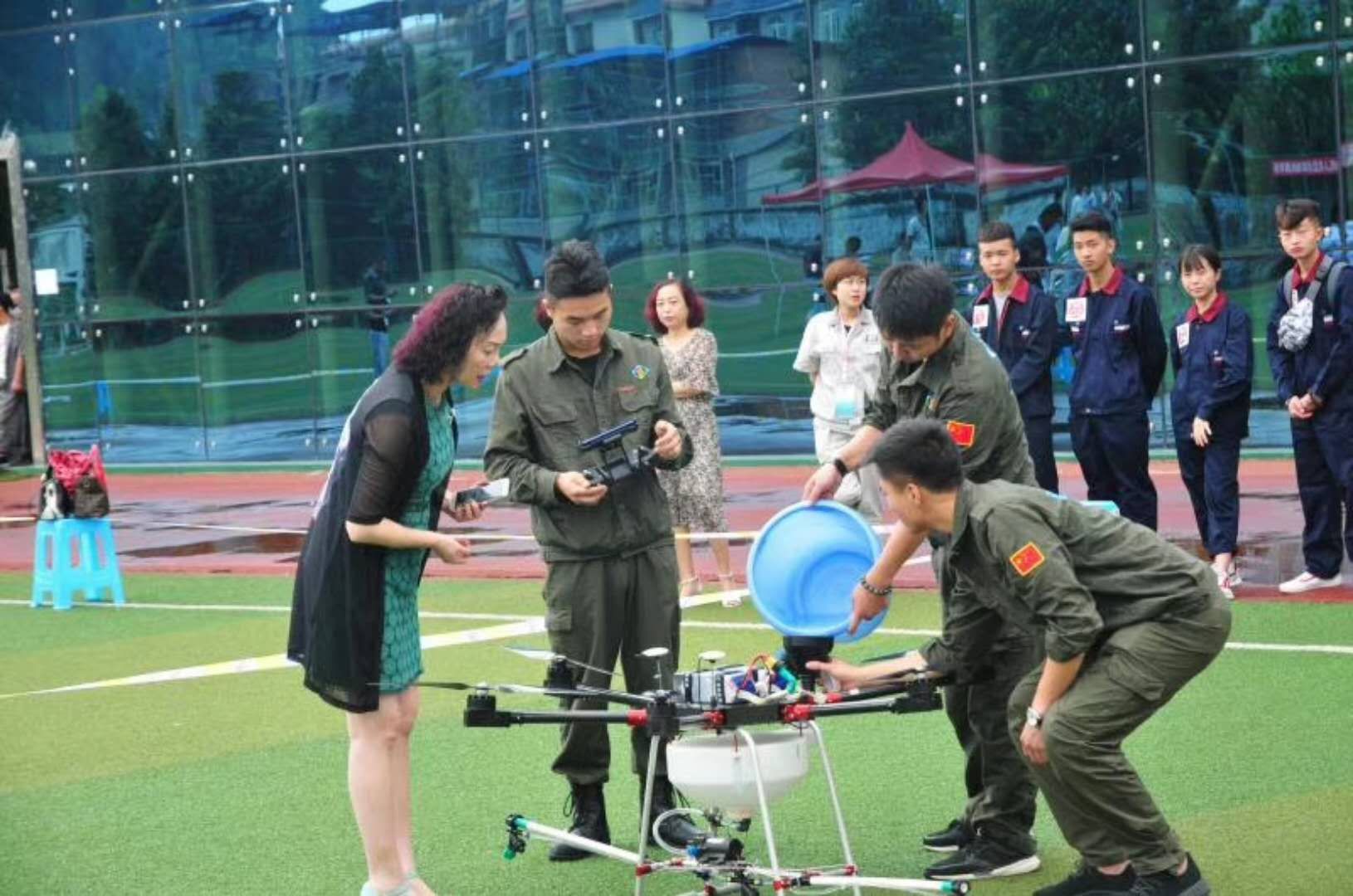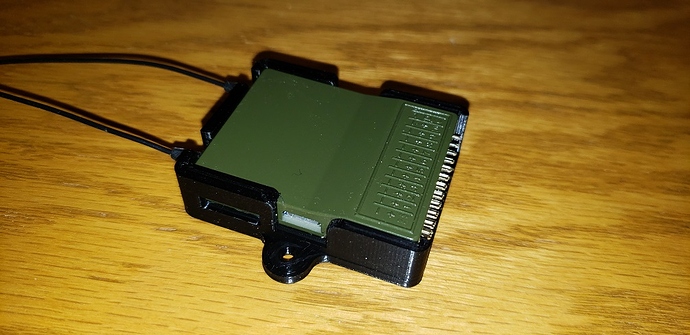Guauu, you are learning chinesse or Cao tell you? I cant understand and Mr google dont want to cooperate.
Cao let me know about the update.
I have asked him about the translation,
for Cala,hopefully test fly tomorrow just hovered it indoors the sticks on the radio are strange will have to get used to them its a 7inch source one with pixhawk 2.1 cube very tight build will rebuild after a few days
![20190111_200635[1]](https://c2.staticflickr.com/8/7843/45789508915_7166c9c443_b.jpg)
If you open a rebuild post let Us to know  M12L looks nice there
M12L looks nice there
hello Cao thank you for the great product of the M12 its brilliant,I have 2 suggestions that would be great marketing tools first a 6 position switch say switch E channel 5 first 3 position’s then push button A to get next 3 positions very usefull on the Pixhawk family of controllers,also maybe a smaller receiver but this is not so important,just my thoughts,Marty
I can allways use Tower for flight modes not engaged brain this morning,on a positive note my OTG UAV is working great so happy happy bunny
Hi Everyone,
Thank you for this awesome thread on the Skydroid M12 system!
As a hobbyist, I struggle with the paradigm shift with the remote controls compared to a traditional R/C system. My emergency bailout mode has always been to use the R/C controls to take over if something goes wrong during the autonomous mission or telemetry link. My older BirdsEyeView FireFLY6 system had changed to using a joystick input option for Mission Planner and I could never warm up to it.
I have a question on the M12 remote controls from a user perspective. It appears that the M12 air unit has both SBUS and PWM output capability to the flight controller. There also seems to be a Telemetry Port that can be connected to a Pixhawk serial port for MavLink communications. Do the M12 sticks and switches control channels on both the air unit’s SBUS and Telemetry Port? Is anything configurable here?
Cheers!
For example?
I have a switch with main modes and a button for osd changing screens up the moment but can try something else if you need to know.
Hey Greg, I too have been lurking and following this thread closely from the beginning, excited by the possibility that a system so conceptually simple can somehow be so much more efficient in terms of transmission power output vs distance that can be achieved than what we’ve become used to in the modern day hobby grade conventional radio control systems with all their flashing lights, bells and whistles.
It wasn’t until about post number 550 plus in this thread, where someone finally made the penny drop for me in a few simple statements, that were; it’s not a conventional r/c system, it’s not a conventional r/c system, (it’s a serial data link).
The point being made is that in regular r/c system there is this a major amount of information constantly being attempted to be transferred, particularly in relation to the individual model customization, that the current crop of highly complex transmitters are wasting available data transfer rates on sending the same information constantly and unnecessarily over and over again.
In researching r/c systems for my return back into this hobby after a 30 year hiatus, I was at first astounded at how complex things such as mixing and servo reversing and all that other stuff now is, that many years ago we used to have to get right by methods such as choosing to mount the servo in a specific way and utilizing correct mechanical components to achieve correct leverage ratios, control throw distances, and build in exponential movement how we needed, by other mechanical optimizations, without the luxury of the availability to program all this into the transmitter, and now we’re trying to cram all that information down through a finitely resourced data pipe.
What first alerted me to what was going these days is contained in technical information from a current high end European ‘radio control system’ used in many professional UAV systems, that quotes a potential 200km range for a 1.5 watt power output, that states unequivocally, that the reason their system can achieve this performance is that it programs such individual model customization information directly into the receiver and not the transmitter, therefore negating the necessity to constantly stream all the info over an r/c link, which taxes the potential effective transmission range of a system according to the data load.
And what’s sold me further on the concept of this system is that, when you read the Ardupilot documentation before even using it for the first time, it should become apparent that most of the mixing and individual model customization can, and should be done by settings in the flight controller, and this therefore makes a lot the data transfer load inefficiency redundant.
And you’re right, it is indeed, a “new” (yet in some ways old) way of looking at how the whole set-up will be done, but one that is worthwhile in what it will achieve overall.
Hi
Does anybody may go with car 60 km away from base station (on some hill) and test working range.
Don’t need to fly with model 60 km away for test range.
megamix
Hi Vic,
Thanks for the in depth explanation. I do remember reading, “it’s a serial data link”, but assumed that the typical amount of data was still being transferred. It seems another paradigm that I was stuck on.
Cheers!
Hi ive just been out and done my first flights with the M12,its a little bit different but its a very capable system its deffinately here to stay,it has a lot of features but is very easy to set up,flew quite a bit using the buttons to switch flight modes worked brilliantly,the other great thing is the designer keeps an eye on it and is very quick to responed in general would I recommended it yes yes and more yeses
Hi cala2,
For your OSD changing modes, is this a physical output changing PWM or a data control via MavLink?
Cheers!
I wholeheartedly agree, a very interesting product and discussion. What I’m wondering about though is whether the amount of data being sent via the radio signal would really impact the quality of the signal, i.e the distance over which the signal can be received. It would seem to me that a lightly-trafficked 2.4ghz signal is subject to the same interference and distance limitations a heavily-trafficked 2.4ghz signal. It would be interesting to hear from a radio engineer about all of this.
I hope a phisycal output, I program button A as a channel and a swich in standard radio, every swiches and buttons has tree positions.
I setup a module to do that, too busy now with harvest but as soon as I have little time Im going to do, probably I find no signals points for lost sign of view but measure from long distance with sign of view, and share with the comunity… Another idea was to put the module in a real sailplane and go away with the car up to loose signal but an ex friend fails me; Im going to find other way to do that test, Im curious about this unit, if you fly 3-4 kms, signal doesnt move from 90-100%, I have to go behind a big terrain slope to ensure that signal can go down. :o
Hey Greg, the receiver inputs PPM or SBUS but has 12 channels of PWM out and it works just like the FRSKY X8R. Now that PWM out is channels 1-10 or via a config to change channel 1 and 2 to channels 11 and 12.
I have a drone that runs pixhawk and uses a number of PWM channels to manage the gimbal, pitch, roll, yaw, zoom and so on.
I have not seen Mavlink used to change an OSD but if it’s possible thats cool. I have seen it run gimbals, mine just doesn’t take advantage of it.
One point I would like to make about the Skydroid system is that it’s a commercial system. Cao put it on AliExpress to test the waters. But they produce the unit to run commercial drones.
They have a big foot print in Ag Drones for instance.
It’s noticeable that is designed for Ag uses, is much easier to clean than standard transmitters, dust in Ag applicatios is a pain.
Nice mount



